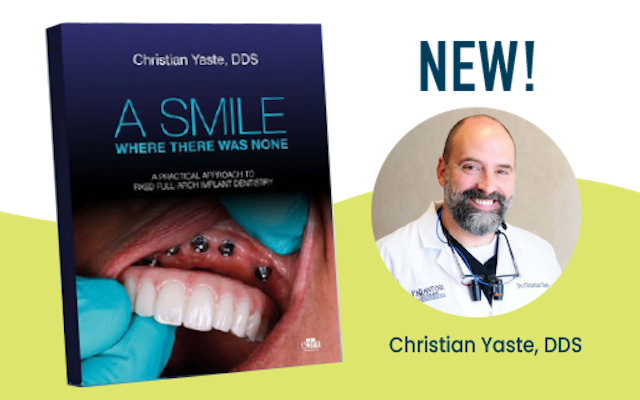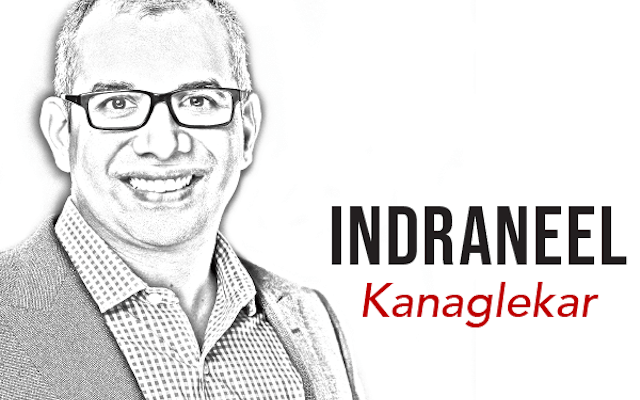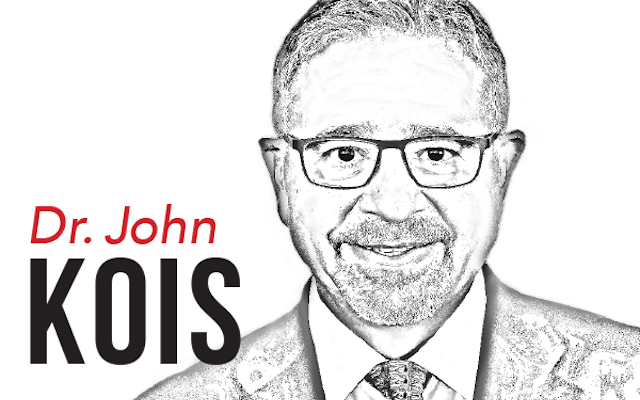Dr. Leslie S.T. Fang has spent his career bridging the gap between the medical and dental fields—and it all started on his first day of medical training at Harvard Medical School.
That’s when he met Dr. Robert Fazio, who sat next to him in the lab. The medical student and the dental student became “friends for life,” Dr. Fang said, supporting each other throughout school and often discussing the challenges facing their fields.
As soon as Dr. Fazio, who became a well-known periodontist, graduated from dental school, he reached out to Dr. Fang about collaborating on a textbook. He saw a void between the dental and medical worlds and wanted to work with Dr. Fang to fill it.
At the time, dental professionals were starting to perform more complicated procedures, keeping patients in the chair for long periods without knowing anything about their medical condition—a combination that could get them killed, Dr. Fang said. So, the doctors formed a lecture series called “How Not to Kill Your Patient” with Dr. Fang discussing medical issues and Dr. Fazio focusing on dental. The pair also went on to write multiple books together, including “Principles and Practice of Oral Medicine,” “Oral Medicine Secrets,” and “The Ultimate Cheat Sheets: The Practical Guide for Dentists.”
“That’s how I became the bridge,” said Dr. Fang, who is a practicing physician at Massachusetts General Hospital and a faculty member at Harvard Medical School. “We would spend afternoons talking about if a patient comes in at the end of the day on Friday with a hot tooth and has a certain medical condition, what do you do? I tried to envision what life was like for a practicing dentist and to figure out the simplest way for them to understand medical issues so they don’t get into trouble. The key emphasis is making sure they take the best care of patients possible. If dentists only pay attention to the dentistry, they’re serving their patients poorly, and that’s especially true in 2020.”
Dr. Fang’s knowledge and involvement in the dental field has been vital during the COVID-19 pandemic. He’s been a resource for dentists as they navigate through reopening their practices and make the necessary changes to keep their team members, their patients and themselves safe.
The Story Behind “The Ultimate Cheat Sheets”
“The Ultimate Cheat Sheets” (UCS) has served as the go-to chairside resource for more than 10 years, covering just about every clinical situation that dentists might face. Information is presented in a color-coded, user-friendly format, which was inspired by friend and co-author Tracey Menhall after she saw Drs. Fang and Fazio deliver a keynote at a dental conference in 2007.
Menhall, an entrepreneur and CPA, loved how engaging their presentation was—and told them it would be great for more of that to shine through in their writing. Their books, while informative, were set up like encyclopedias, listing rules and exceptions to the rules and exceptions to the exceptions. She suggested they condense the 32 pages on high blood pressure and 48 pages on diabetes to one page each—a challenge the doctors accepted.
“What you have to do is boil everything down to the absolute essentials,” Dr. Fang said. “So, we worked at it and I’ll be the first to say it took us longer to write one page than it took to write 48. We had to get rid of everything that wasn’t totally relevant yet make sure we didn’t miss anything.”
It took them a year to complete the first edition, what Dr. Fang described as a “monumental task.” Each update takes about a year to complete as well. Menhall remains involved and is a co-author.
After the first UCS edition came out in 2008, Dr. Gordon Christensen bought copies to circulate to his reviewers and continued to distribute updated guides for years. The publication was voted the Best Educational Product from 2008 to 2015 by Clinicians Report and is now designated a Classic Product.
There is also a UK version of “The Ultimate Cheat Sheets.” Dr. Elaine Halley, a UK-based dentist, and Jonathan Bell, a London-based orthopaedic surgeon, collaborated to adapt Dr. Fang’s text to meet UK guidelines. The chairside resource covers a variety of topics, including a list of the 50 most commonly prescribed drugs in the UK, the top 150 drugs prescribed in medicine and the dental implications of those drugs, and the use of antibiotics in dentistry, cardiovascular diseases, diabetes, respiratory and liver diseases, and chronic kidney disease.
Addressing COVID-19 in “The Ultimate Cheat Sheets”
Dr. Fang and Menhall have followed the novel coronavirus since it was first reported in China. They knew it had the potential to cause a global pandemic—and that dentistry would be one of the most negatively impacted industries if it did.
The information surrounding COVID-19 is constantly changing, and that means dentists need a resource they can turn to for the latest updates. Over the last few months, Dr. Fang has presented several webinars on COVID-19, reaching more than 20,000 dental professionals. He has taken what he’s learned about the coronavirus and added two pages to the 2020 UCS as well as created a separate edition, “The Dental Response to COVID-19,” that focuses on the changes dentists need to make to keep everyone safe as they reopen their practices and start to see patients again.
“We gave this to KOLs and got a ton of feedback that we incorporated into the final product, which outlines the new normal,” Dr. Fang said. “Tracey and I jokingly call it the COVID Bible. There’s no question people are interested in this information.”
Dr. Fang continues to get feedback and suggestions to include in the guide. It’s been a collaborative effort, which Dr. Fang finds very encouraging as the industry navigates through these challenging times.
The impact of COVID-19 on dentistry
As dentists reopen their practices, there are many precautions they must take and new protocols they must develop to reduce the risk of coronavirus exposure. One of the biggest changes involves personal protective equipment (PPE), particularly the type of masks dental professionals wear.
Before the pandemic, if dental distributors sold three N95 masks in a month they’d consider it an unusual month, Dr. Fang said. Now, dentists and their team members want to use them routinely. But, N95 masks are still difficult to obtain, with most going to medical professionals treating COVID-19 patients. There are alternatives that offer the same 95% filtration, though, including the KN95 masks used in China. The only difference is KN95 masks tend to fit looser, which can be corrected with a clip that hooks onto the two loops in the back, making the mask as airtight as the preferred N95.
“KN95 masks are available, just be careful. More people are making fake KN95 masks than real KN95 masks,” Dr. Fang said. “That’s why it’s important to rely on your distributor. They have gone through every vendor in China and know which masks are FDA certified.”
Distributors are also much less likely to price gouge, as they want dentists to become lifelong customers, Dr. Fang said. If you buy from other sources, you’ll likely pay a much higher price and might end up with a mask that doesn’t offer the necessary protection. Dr. Fang expects distributors to start sourcing masks similar to the KN95 from other areas.
Gowns also may be difficult to source, Dr. Fang said, but it’s OK to wear reusable gowns as long as you are “very meticulous” about washing them properly.
Aerosols also are a top concern as dentists return to work, but there are ways to reduce them, Dr. Fang said. Using dental dams is an inexpensive and proven way to decrease aerosols. Using four hands in the field with two dental professionals is another, with one person “very effectively” using a high-volume evacuator to clear the field and minimize aerosolization. Then there’s fogging, another effective option many dentists are implementing into their practices.
“There are a lot of people trying to figure out how to capitalize on this situation, making aerosol vacuum systems and air purifiers,” Dr. Fang said. “The most important thing to understand is aerosols hang around for hours and the virus is able to exist in aerosols upwards of 16 hours. Not being meticulous about decontaminating the operatory at the end of a case will put the next patient in jeopardy.”
Keep in mind there are many simple steps you can take to reduce aerosols and lower the risk of coronavirus exposure; you don’t have to spend thousands of dollars on upgrades, Dr. Fang said. It’s important for dentists to share creative strategies that will help make practices safer. Those are the types of ideas Dr. Fang looked for when judging TheNew.Dentist contest on post COVID-19 preparedness.
Why you should be fogging
Fogging operatories is a step that dentists can take to minimize aerosols and kill the coronavirus, Dr. Fang said. The UCS COVID-19 resource details what exactly a fogger is, how it works and what dentists should look for when purchasing one.
“You can’t completely eliminate aerosols and risk, but if you do the right thing you can bring the risk down to almost nil,” Dr. Fang said. “So, you’re looking for a machine that delivers fog of less than 20 microns and safely disseminates hypochlorous acid. It should allow you to aim fog at the ceiling and go all over the room and allow the fog to then settle on surfaces.”
Fogging usually takes about three minutes. Even if you’re fogging, you should still go through the typical decontamination process after each patient, including wiping everything down with an appropriate disinfectant.
Helping team members feel safe
Some team members may be hesitant to come back to work before there’s a vaccine. Taking additional steps, such as fogging and screening patients for the virus, can help make nervous team members feel more comfortable returning to the office.
Clear direction on PPE also will help. Even though you likely won’t be able to obtain N95 masks for your team members in the near future, you should be able to find alternatives that work just as well with minor modifications to the fit. It’s also important to provide eye protection, face shields and gowns for extra protection. Go over proper don and doff protocols with your team members so they know how to limit contamination.
“If you follow all of the recommendations in the COVID-19 workbook you are basically saying ‘I’m going above and beyond to make the practice safe,’” Dr. Fang said. “For example, we are fogging our premises routinely. It’s so easy to do and gives added reassurance to the staff.”
Lessons learned
While we can take some best practices from other countries that are ahead of us in this fight (dentists in China have been fogging and donning more robust PPE for a few months now) there are some processes other countries have implemented that might not won’t work in U.S. practices. Creating a flow where traffic only goes one way might not be feasible in your office, for example, but is a popular change in some countries.
U.S. dentists continue to think of creative ways to keep everyone who enters their practice safe, from creating their own 95% filtration masks to developing different ways to fog their operatories, so there’s a lot to be learned right here.
“If you follow the guidelines and recommendations in “The Ultimate Cheat Sheets” COVID book, you’re going to be aware of the fact our dentists are by far the most aggressive in protecting themselves, their staff and their patients from coronavirus,” Dr. Fang said.
Don’t let your guard down
COVID-19 is new, making it difficult to predict what will happen in the coming months. We don’t know if there will be a second wave and, if there is, when it might happen. It’s important for dental professionals to stay diligent about the new procedures they’ve implemented and to be ready for a potential resurgence.
“The virus is in charge, we’re not,” Dr. Fang said. “We can’t be complacent or stop developing antivirals or working to develop vaccines. Even if SARS-CoV-2 doesn’t come back, there will be a third and a fourth. We have to understand we can’t be caught unaware again because this has ramifications that are above and beyond our lifetime.”
Interested in purchasing the “The Ultimate Cheat Sheets: The Dental Response to COVID-19?” Click HERE. The guide is available for $60. You can purchase the 2020 guide HERE.
The UK version of “The Ultimate Cheat Sheets” is available HERE.
 By:
By: 


